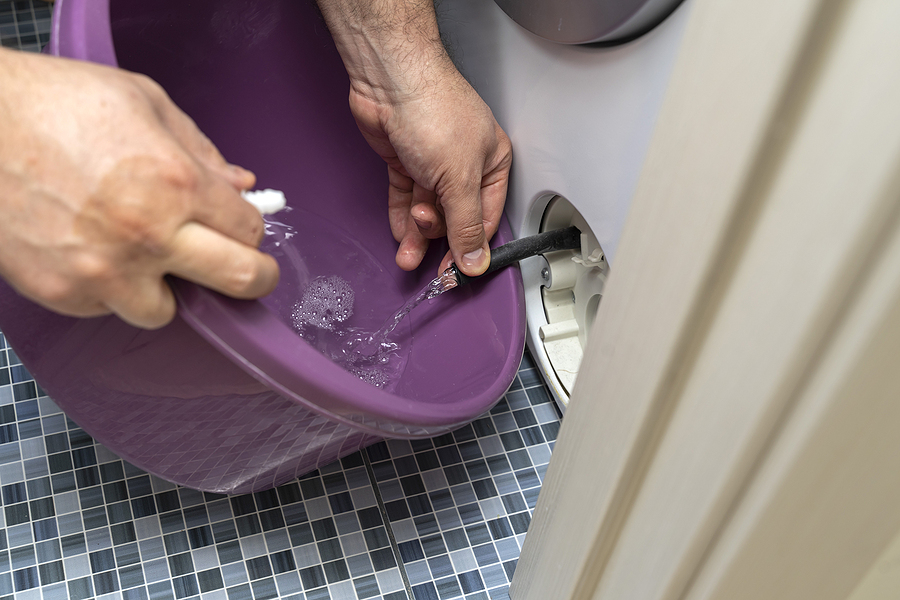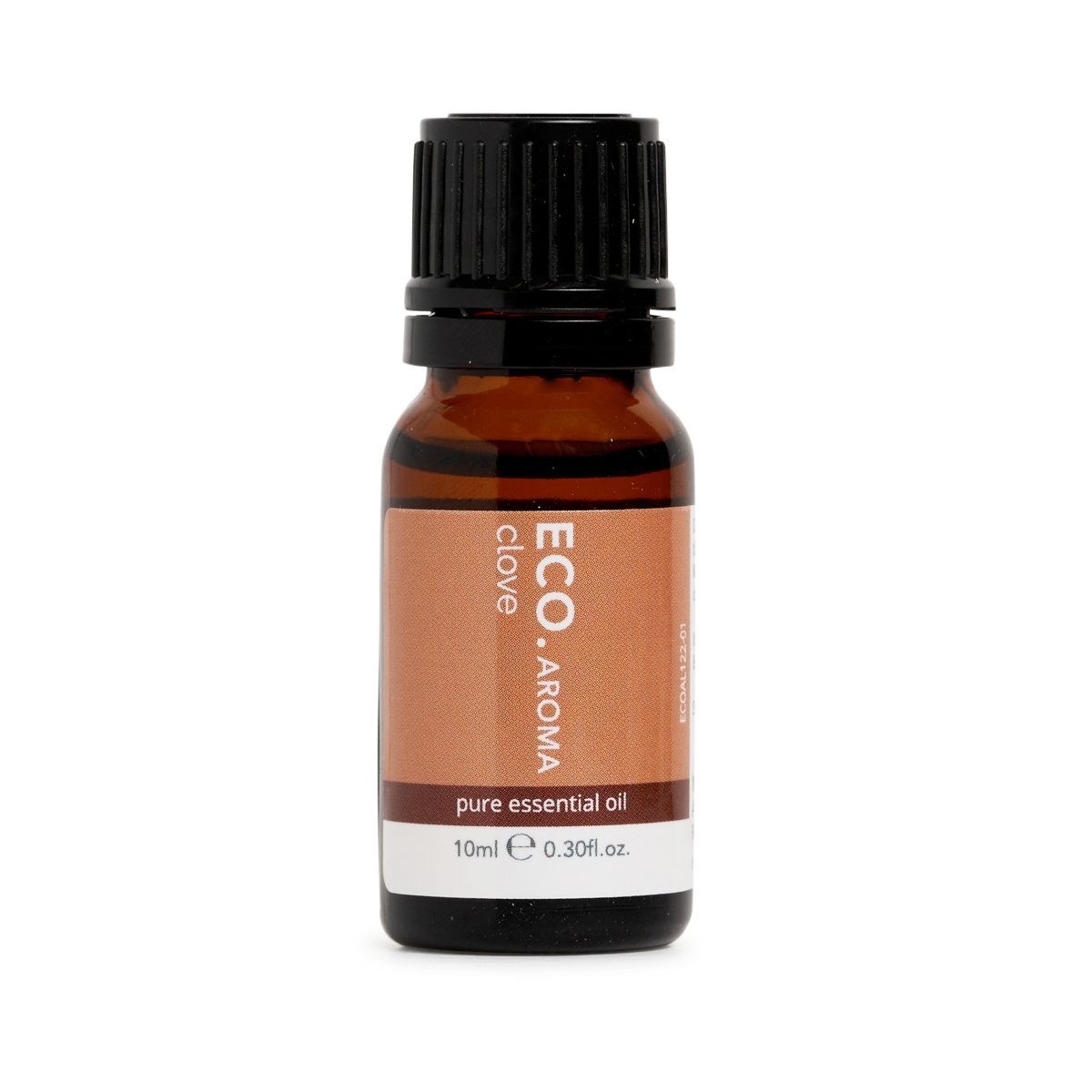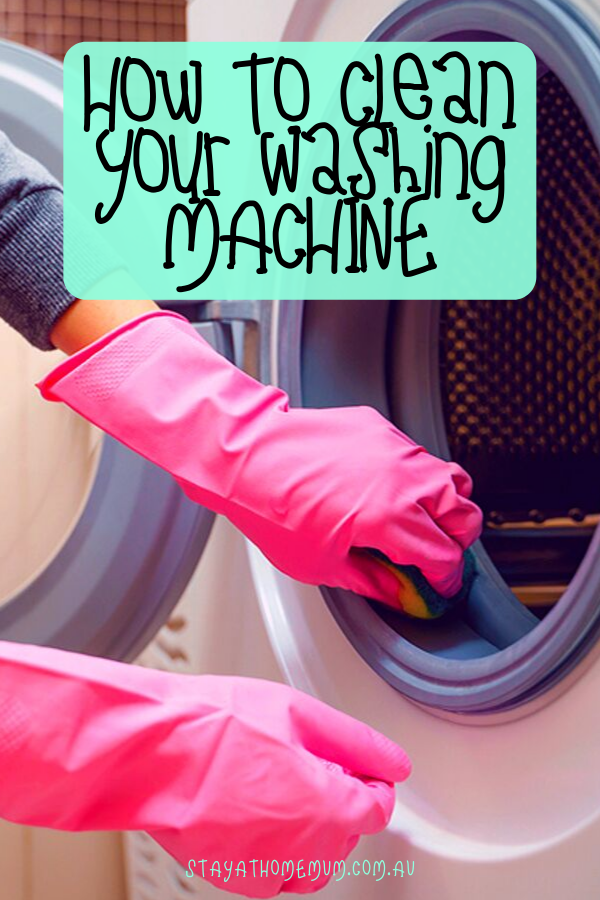How To Clean Your Washing Machine (‘Cause They Get Really Gross!)
If you clean your washing machine regularly and give it a good sanitisation, your machine will last longer and your clothes will be cleaner!
Washing machines are always full of soapy water, so you wouldn’t think that they got dirty… But you would be wrong. Washing machines get damn filthy with all the bits of food, dog hair, grease, dirt and blood that our clothing absorbs when we wear them, so you should clean your washing machine at least once per month. Plus sometimes washing machines develop horrible smells – so sanitizing your washing machine every so often will stop this from happening.
But don’t worry – we have cheap, easy and simple ways of how to clean your washing machine and sanitise it too, which is gentle and will clean all the grime without ruining your machine!
What we will be covering in this article:
- Why You Should Regularly Clean Your Washing Machine
- Information about using Fabric Softener
- How to Clean a Top Loading Washing Machine
- How to Clean a Front Loading Washing Machine
- How to Sanitize Your Washing Machine
- How Often You Need to Clean Your Washing Machine
- What is Better – A top-loader or a front loader?
- Help! My detergent tray is mouldy!
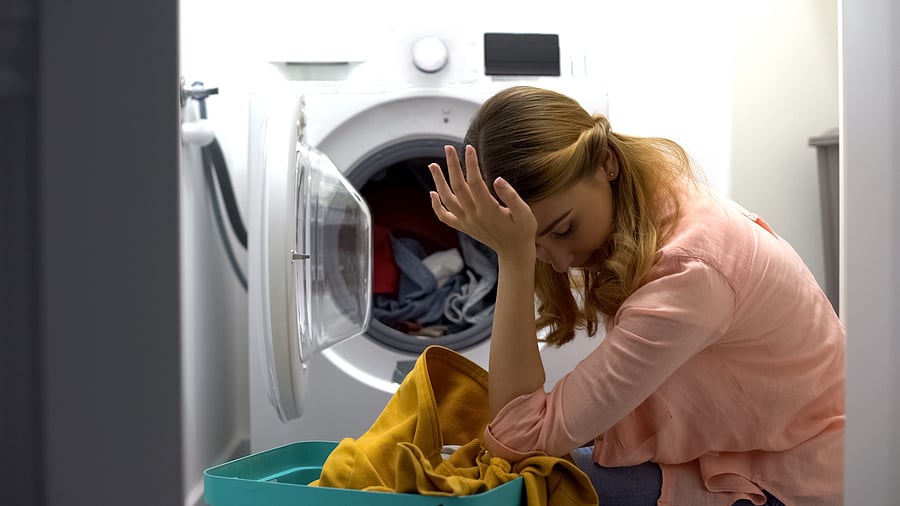
1. Why You Should Regularly Clean Your Washing Machine
Washing detergents and fabric softeners can accumulate in hard to reach places in your washing machine, and on top of that, because washing machines always have a bit of water in them, they can be a cesspool for mould and mildew and can start to stink ewwww!
Plus if you have young children, no doubt you will be washing soiled clothing – and do you really want to wash your clothing in a machine that may have remnants of fecal matter in the crevices? Washing your clothing in a dirty washing machine won’t get your clothing as clean and fresh as you might like. And if your washing machine has a bad smell, that can transfer to your clothing too.
But if you can schedule a monthly washing machine clean and sanitisation, it will make your clothes clean and fresh – and keep your washing machine in top working order for longer.
More Reading:
2. A Bit of Information About Using Fabric Softener
Fabric softener is the devil when it comes to washing machines. As much as it smells pretty, it always seems to stick to the inside of pipes which can cause blockages and means you have to call out a repair person to look at it. Apart from smelling nice, there really is no use for fabric softener, use white vinegar instead and ditch it all together!
Unless the repair person is hot – then go forth and use it!
Use one cup of white vinegar per wash. Not only does it act as a fabric softener, white vinegar also stops body odour from setting into clothing.
3. How to Clean a Top Loading Washing Machine
Top loading washing machines are much easier to keep clean. So let’s start there!
What you will need:
- 1/2 cup Bicarbonate of Soda (grab it from the cooking aisle of your local supermarket) or Baking Soda
- 2 cups White Vinegar
- 1 teaspoon washing up liquid
- Soft microfibre cloth
- An old toothbrush
To clean a top-loading washing machine, run a normal wash cycle (on hot) and place 1/2 cup bicarbonate of soda and 2 cups white vinegar into the drum (where you place the clothes), once the machine has filled with water, pause the machine and let the white vinegar and bicarb do its job for an hour or so to really let that liquid soak into all the crevices.
Then, let the washing machine run as usual. The bicarbonate of soda and vinegar will break down any grease or dirt particles and keep the hoses nice and clean.
Once the cycle has finished, use a damp microfibre cloth with a little washing-up liquid to clean any stains on the outside and wipe away dust residue.
Use the old toothbrush to gently buff away any grime that you can’t reach with the cloth.
If the fabric softener dispenser is grotty and has build-up, remove it and either run it through your dishwasher (in the top basket) or wash in the sink with hot soapy water.
Replacing fabric softener with vinegar is not only cheaper, but it’s also better for your machine too!
4. How to Clean a Front Loading Washing Machine
Okay seeing that front loading washing machines are more popular (even though you are wrong) – here is how to clean one! The thing with front loading washing machines is that they get dirtier than top loaders…. Dirty, dirty machines!
What you will need:
- 2 tablespoons Bicarbonate of Soda or Baking Soda
- 1/2 cup White Vinegar
- A damp microfibre cloth
Sorry people, front loaders get grottier than their top loader cousins. To clean your top-loading washing machine, add 2 tablespoons of bicarbonate of soda into the detergent drawer and 1/2 cup white vinegar into the drum then run a normal wash (on hot). Just keep an eye on the machine while it’s washing as you may find it suds up a lot inside due to the build-up of soap residue. The more often you clean your machine, the less often this will occur over time.
Also, take the time to clean out the filter (follow the manufacturer’s instructions). Clogged filters are the leading cause of problems in front-loading machines. Many of the front loader filters are located on a little door in the bottom corner – but if you can’t find it – grab your manufacturers booklet to find the location (or Google the make and model of your machine).
To clean the seals on your front loader, grab your damp microfibre cloth, and wipe it well, ensuring you get into all those crevices.
Most front-loading machines have removable soap and fabric softener dispensers and this is quite often an area loved by mould. Most pull out quite easily (don’t force it!). To clean, either place in the top basket of your dishwasher or rinse in hot soapy water and allow to dry in the sun.
Little Hint:
To prevent your front loader from developing ‘Bad Breath’ (especially in hot climates) – ensure that you remove the washed clothing soon after the machine has finished its cycle. If you can’t be there to grab your clothing then, ensure you use the ‘Time Delay’ function if your machine has this so you can wash just before you get home.
More Reading: How to Wash a Weighted Blanket
Don’t Forget To Clean the Rubber Gasket!
To prevent mould build-up on the seals or rubber gasket of the machine, keep the door slightly ajar in between uses. This allows airflow into the machine and allows any water or dampness to dry. If any mould is present, use equal parts of hot water and vinegar to wipe it away with a cloth. Done regularly when you clean your washing machine, mould will not build up on the seals.
Another good reason to check the rubber gasket regularly is that if you get a random bobby pin stuck – it can rip the gasket right open – and they are expensive to replace (been there, done that!). So give it a check every wash to ensure one doesn’t escape!
What is ‘Hard Water’?
Hard water is water that is full of dissolved minerals, mainly calcium and magnesium. When water containing a lot of these minerals is heated up like it is in a washing machine, this can cause solid deposits of the mineral which can cause blockages in the plumbing. Hard water is another reason you may need to clean your washing machine more often.
5. How to Sanitise Your Washing Machine
Sanitising your washing machine on a regular basis (or when you clean your washing machine) will kill any bacteria and mould and will keep your machine smelling good for longer.
To sanitise your washing machine, add one cup of chlorine bleach to the machine. Then you want to run your washing machine empty on the longest and hottest setting. Once your machine has filled with water, hit the pause button and allow the water and bleach to sit in the machine for at least an hour, before resuming the cycle.
The rinse cycle will remove the last traces of chlorine. But if you are still worried about bleaching your clothing, run the machine a second time with no bleach just to be sure.
6. How Often Do You Need to Clean Your Washing Machine?
I clean my washing machine about once every two or three months, but you can do it really as often as you like. If you are washing greasy clothing or heavily soiled children’s clothing, do it monthly. I have used these methods with my own front loader machine many times and can attest to their effectiveness. I have owned my front loader machine now for seven years and it hasn’t missed a beat.
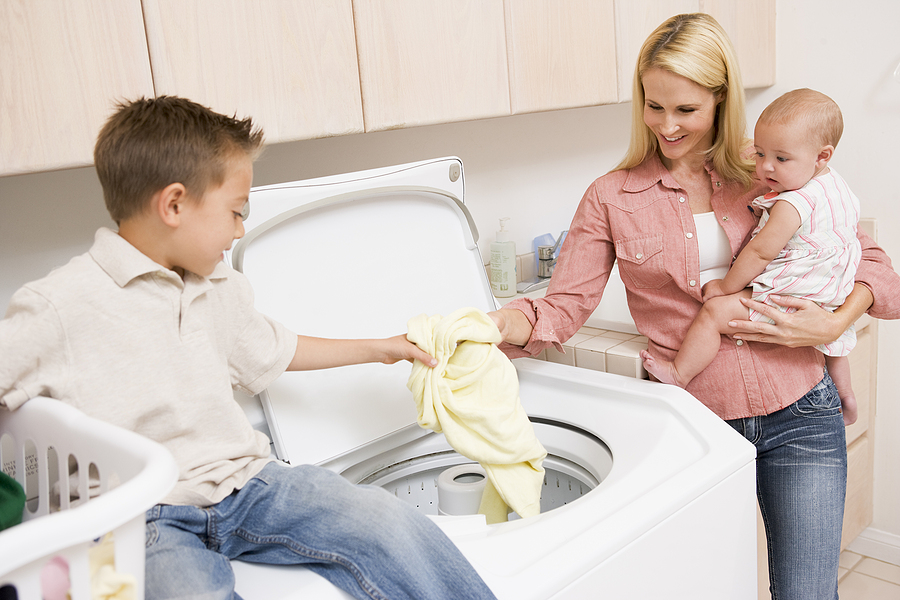
But My Washing Machine is Still Stinky!
Oh, dear! You’ve tried to clean your washing machine using all of the above and your machine still smells like a dried up muddy creek. There’s mould lurking around in there. There are two options– natural or chemical!
7. What is Better – A Top Loading Washing Machine or Front Loading Washing Machine?
Look, I’m a Top-Loading washing machine lover. Sure, they don’t look half as pretty as the front loaders do, and sure, they use more water, but I’ve owned a lot of washing machines in my time and I have far less trouble with the top loaders.
I own one now, and even though I’m on tank water and must always conserve water where I can, I wouldn’t swap my top loader for a front loader any day of the week.
The Natural Way to Ditch Mould in Your Washing Machine
In the empty machine, place about 10 drops of Clove Oil into the drum (either front loader or top loader). Wash on the hottest setting. Clove Oil is a great natural mould killer, but is very pungent so make sure your doors and windows are open! Clove Oil is available from most chemists or health food stores.
Clove Oil is also available online from Eco Modern Essentials
The Chemical Way to Clean Your Washing Machine
For a top-loading machine, fill the machine with hot water and add one cup of bleach. Allow the water to agitate for 10 minutes, then discard the water. Run another cycle on empty to get rid of any residue bleach (or you might ruin your clothing!). For a front loading machine, add two tablespoons of bleach to the detergent dispenser and run empty on the hottest cycle.
Don’t use any more than that or it could over-sud and this can ruin the electronics in your machine. You may need to repeat this a few times for particularly bad mould problems.
There are now a selection of Washing Machine Cleaners available as well. Now I haven’t tried any yet – but here are a few I’ve found:
- Pine O Cleen Anti-Bacterial Washing Machine Cleaner
- Dettol Washing Machine Cleaner
- Dr Beckmann Washing Machine Cleaner
Help! My detergent tray is mouldy!
This happens quite often in the summer months and it is worse for some reason if you use creamy fabric softener. There are a couple of options. The first is to carefully pull the drawer right out of the machine, and pop it in the top tray of your dishwasher. It will bring it up like brand new and will kill all the mould from the heat.
If you don’t have a dishwasher, fill the sink with the hottest water you can. Add a little bleach and a teaspoon of washing up liquid and let it soak for an hour or so. Then remove, rinse it off, let it dry totally in the sun, and pop it back in – easy peasy!
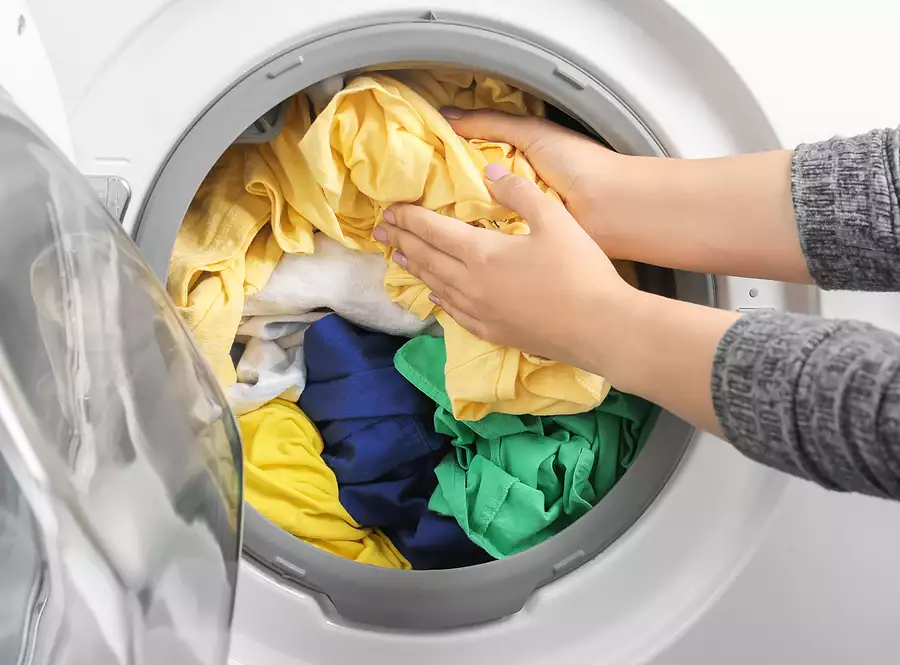
Q. What brand of washing machine do you own?
This is a question I get a lot! Now I do up to 12 loads of washing per week – so I need something sturdy, affordable and reliable. I currently own a top loader Fisher & Paykel 10kg Washer as pictured below.
It’s been brilliant. I have owned both top loaders and front loaders over the last 20 years (when I move I get a new washing machine) – and I can honestly say top loaders are the best by far!
What other tips can you share about cleaning your washing machine?
How to Clean Your Washing Machine



